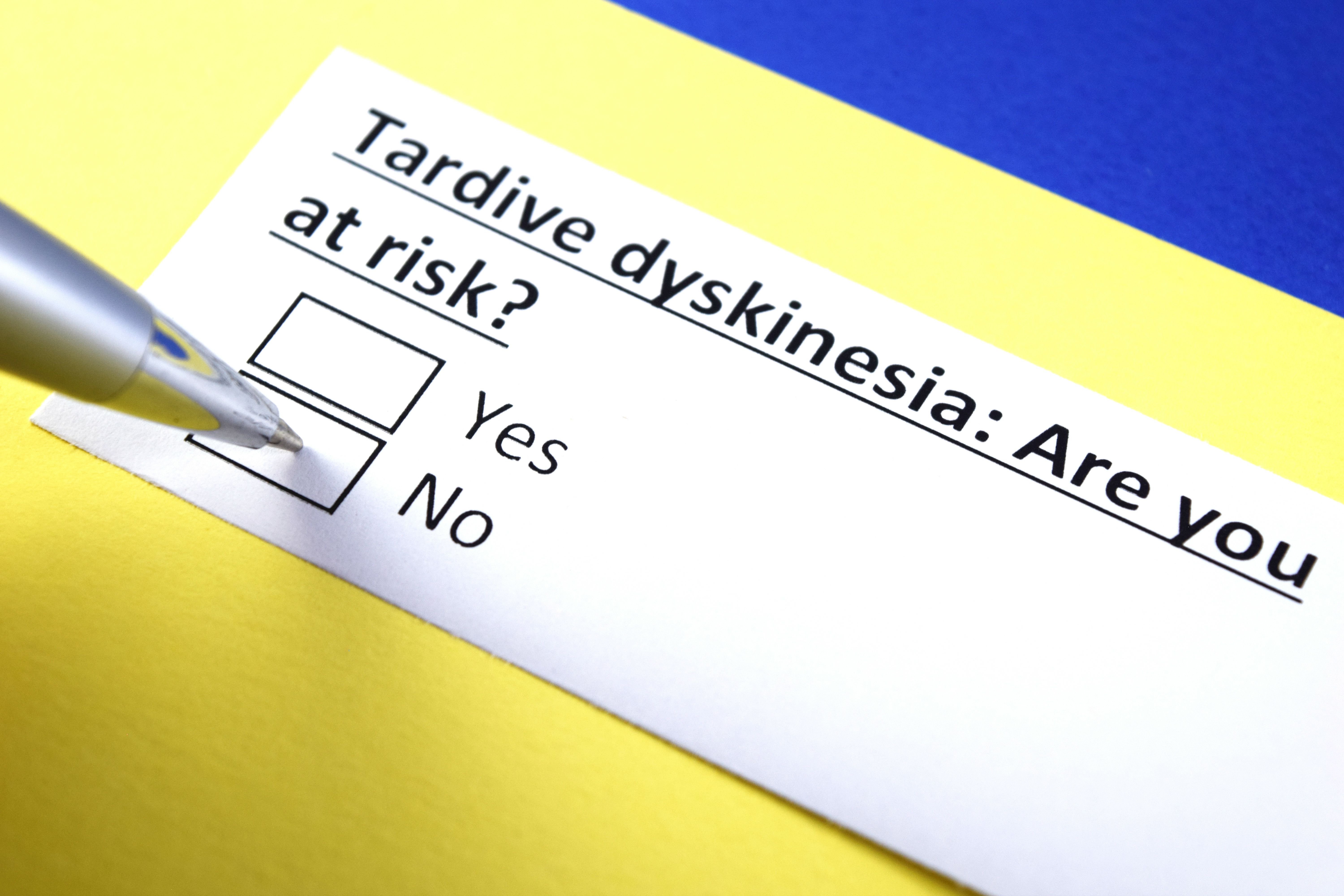News
Article
Tardive Dyskinesia in US Antipsychotic Users
Author(s):
This 2024 APA Annual Meeting poster estimated the prevalence of tardive dyskinesia in antipsychotic users in the US, and found rates ranging from 94.1-127.4 per 1000 antipsychotic users.
Richelle/AdobeStock

CONFERENCE REPORTER
Tardive dyskinesia (TD) impacts at least 500,000 individuals in the United States. About 60% to 70% of cases are mild, and about 3% are extremely severe. Patients who have been treated for schizophrenia, schizoaffective disorder, or bipolar disorder are particularly at risk.1
Presented at the 2024 American Psychiatric Association Annual Meeting, the poster, “Estimated Tardive Dyskinesia Prevalence in Antipsychotic Users in the United States,” examined the relationship between TD and antipsychotic use.2
Using pharmaceutical and procedure claims data from the IBM MarketScan© commercial insurance database (2012-2019) and the Centers for Medicare & Medicaid Services (CMS; 2010-2019), investigators identified adult patients with more than 1 antipsychotic claim and their geographic location.
Investigators defined the index date as the first observed antipsychotic prescription date. Patients were required to have at least a 30-day antipsychotic supply within 3 months following the index date and 12-month continuous enrollment following the index date. Participants were then categorized into 3 mutually exclusive cohorts by their antipsychotic use history: first-generation use, second-generation use, and mixed use. TD prevalence rate per 1000 antipsychotic users within each geographic region was estimated based on region-specific antipsychotic use history observed in claims data and use history–specific TD prevalence rate from a published meta-analysis.
Included in the analyses were approximately 572,314 antipsychotic users covered by commercial plans from 341 metropolitan statistical areas, 3,611,154 antipsychotic users covered by Medicare from 3219 counties, and 3,230,543 antipsychotic users covered by Medicaid from 3196 counties who met the inclusion criteria. Among the commercial population, the mean proportion of first-generation users, second-generation users, and mixed users was 7.9%, 89.6%, and 2.5%, respectively. The mean estimated TD prevalence rate was 94.1 per 1000 (9.41% of antipsychotic users), and the median (interquartile range [IQR]) was 92.5 (88.8, 97.2). Among the Medicare population, the mean proportion of first-generation users, second-generation users, and mixed users was 7.5%, 70.2%, and 22.3%, respectively, across counties. The mean estimated TD prevalence rate was 127.4 per 1000 (12.74% of antipsychotic users) and the median (IQR) was 124.4 (117.2, 131.4). Among the Medicaid population, the mean proportion of first-generation users, second-generation users, and mixed users was 4.7%, 78.9%, and 16.5%, respectively, across counties. The mean estimated TD prevalence rate was 110.6 per 1000 (11.06% of antipsychotic users) and the median (IQR) was 107.8 (100.6, 115.6).
The analysis found that TD prevalence rates ranging from 94.1-127.4 per 1000 antipsychotic users were estimated in patients covered by commercial health insurance, Medicare, and Medicaid in the US.
Previous research has also identified TD risk associated with antipsychotic use. For example, one study found a 5.1% prevalence rate of TD in patients with bipolar disorder (n = 1074) treated at Mayo Clinic and other sites in the Bipolar Disorder Biobank research collaborative.3 However, the investigators in this study considered the rate a likely underestimate, as milder cases may not have been diagnosed or reported. Another meta-analyses by Carbon et al found a significantly greater risk of TD in participants who were actively taking a first-generation antipsychotic compared with a second-generation antipsychotic.4 The investigators analyzed 41 studies, which included 11,493 participants on antipsychotic medications and demonstrated an overall prevalence of TD in 25.3% of participants. Participants taking first-generation antipsychotics had a 30.0% prevalence of TD, while participants taking second-generation antipsychotics had a 20.7% prevalence of TD. Research like this “serve[s] as a sobering reminder of the significant frequency of this disfiguring and sometimes disabling adverse effect, which can be irreversible.”5
Are you interested in tardive dyskinesia research? Let us know at PTEditor@MMHGroup.com!
References
1. Robert L. Tardive dyskinesia facts and figures. Psychiatric Times. May 30, 2019. https://www.psychiatrictimes.com/view/tardive-dyskinesia-facts-and-figures
2. Thompson SF, Greatsinger A, Ayyagari R, et al. Estimated tardive dyskinesia prevalence in antipsychotic users in the United States. Poster presented at: 2024 APA Annual Meeting; May 4-8, 2024; New York, NY. Accessed April 29, 2024. https://s7.goeshow.com/apa/annual/2024/poster_search.cfm?session_key=0107184E-90B1-1C06-DFD2-7A9DEE36768B&session_date=Sunday,%20May%2005,%202024
3.Gardea-Resendez M, Taylor-Desir MJ, Romo-Nava F, et al. Clinical phenotype of tardive dyskinesia in bipolar disorder. J Clin Psychopharmacol. 2022;42(2):159-162.
4. Carbon M, Kane JM, Leucht S, Correll CU. Tardive dyskinesia risk in first- and second-generation antipsychotics in comparative randomized controlled trials: a meta-analysis. World Psychiatry. 2018;17(3):330-340.
5. Osser DN. Use of antipsychotics: risks of tardive dyskinesia. Psychiatric Times. 2022;39(12).
Newsletter
Receive trusted psychiatric news, expert analysis, and clinical insights — subscribe today to support your practice and your patients.





